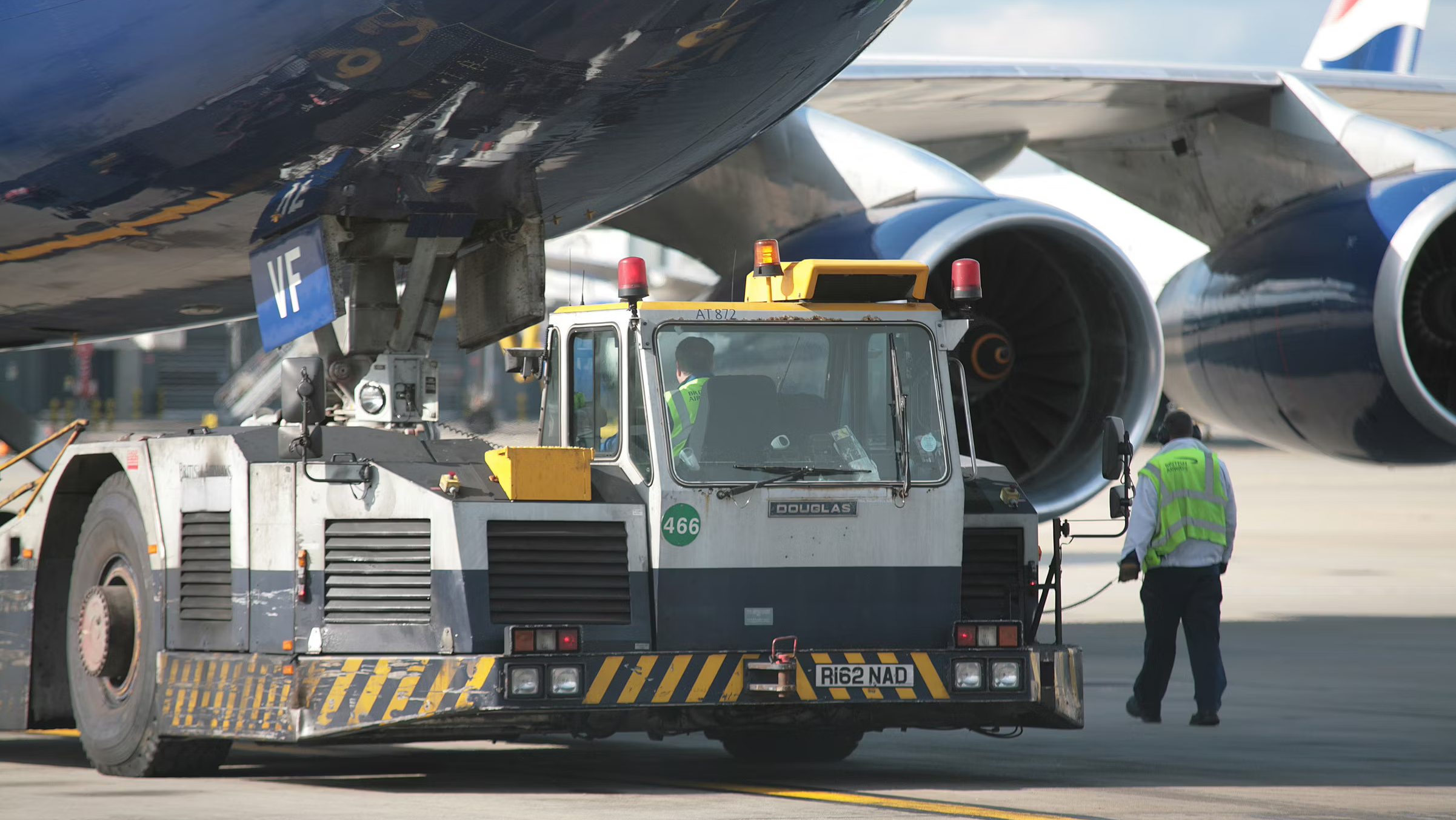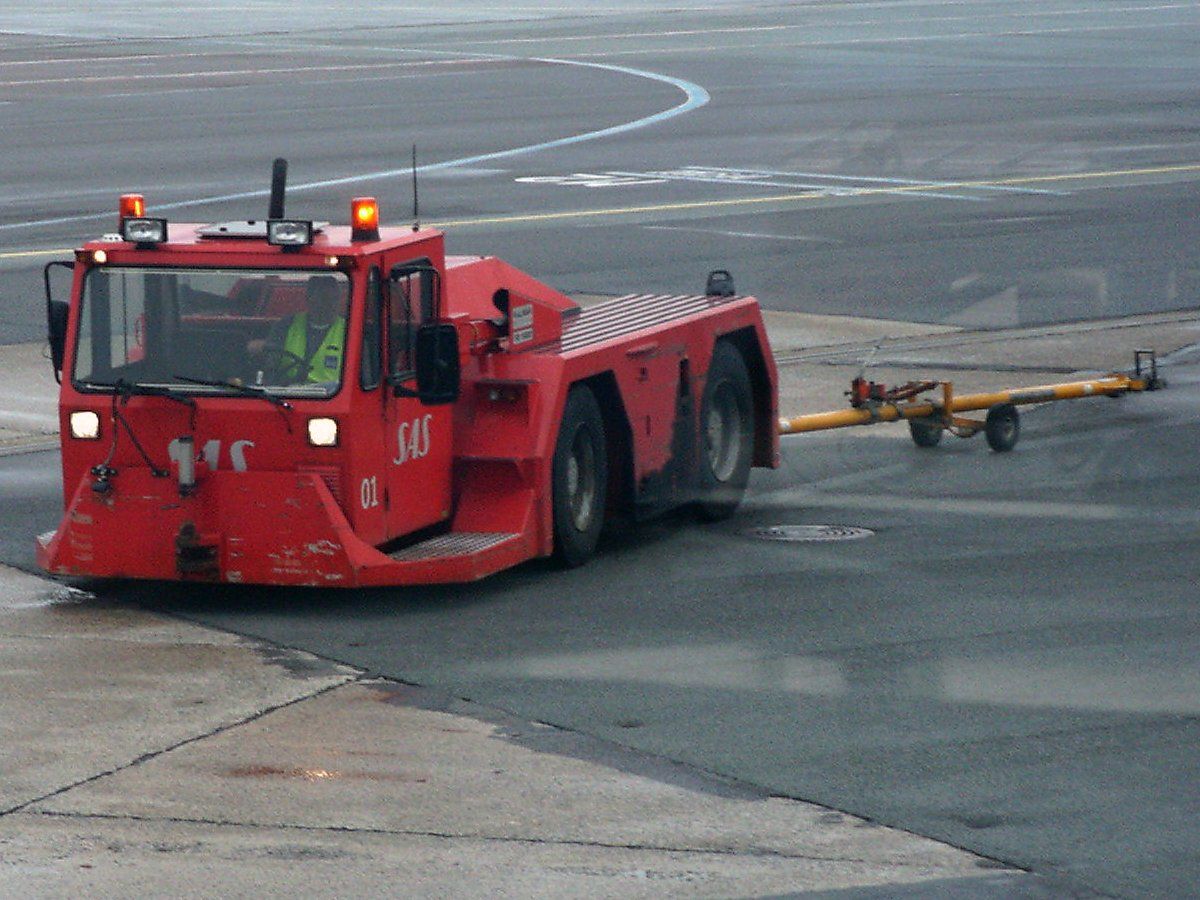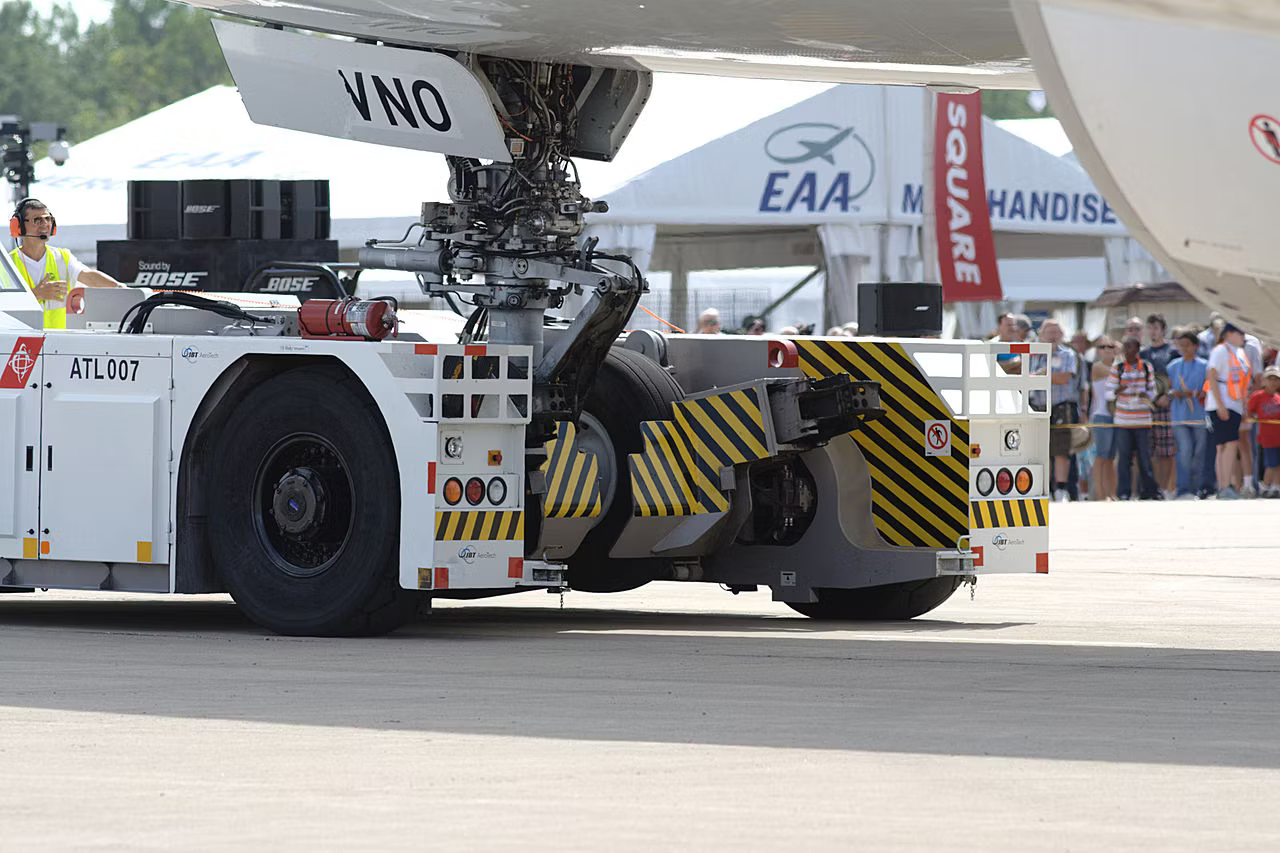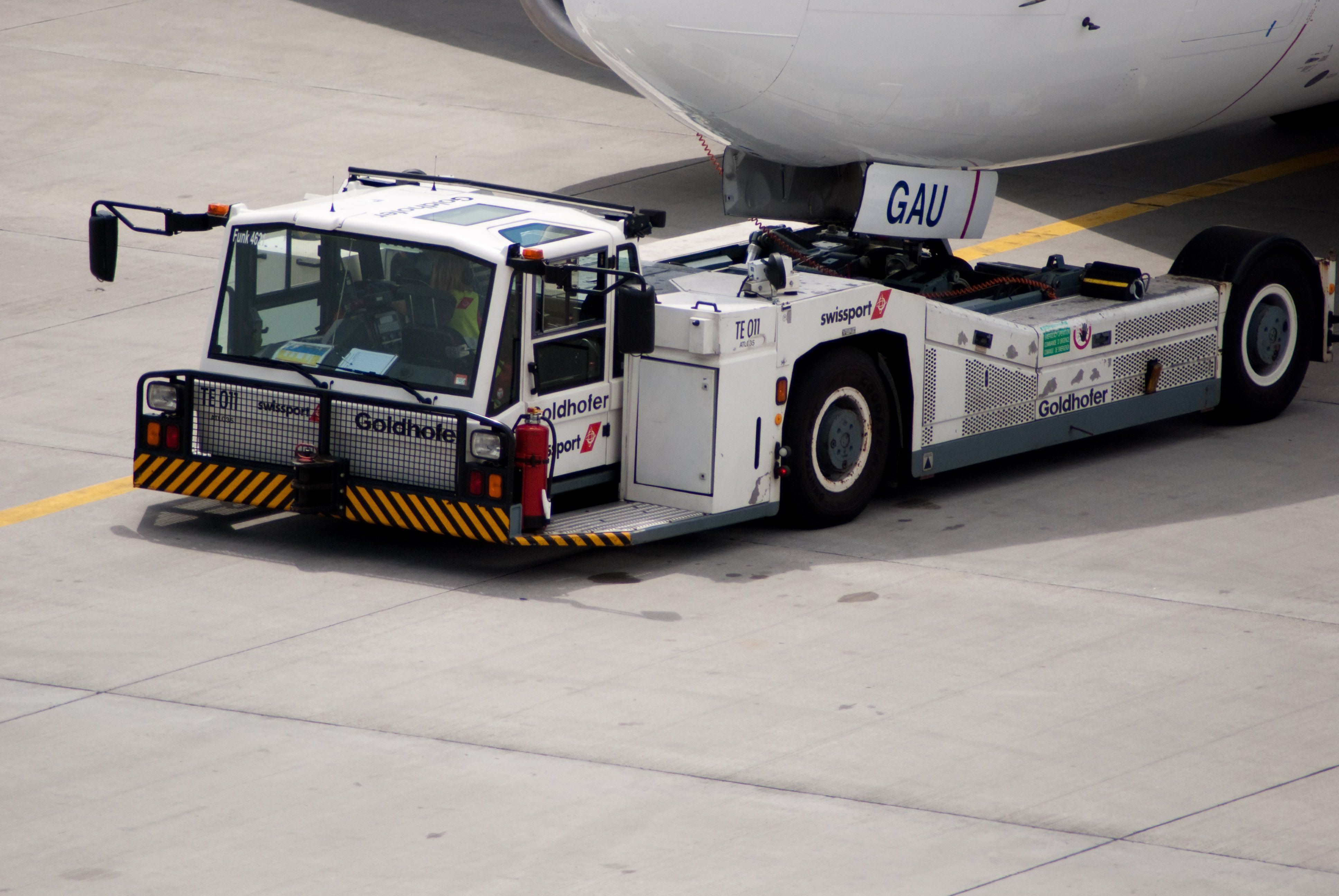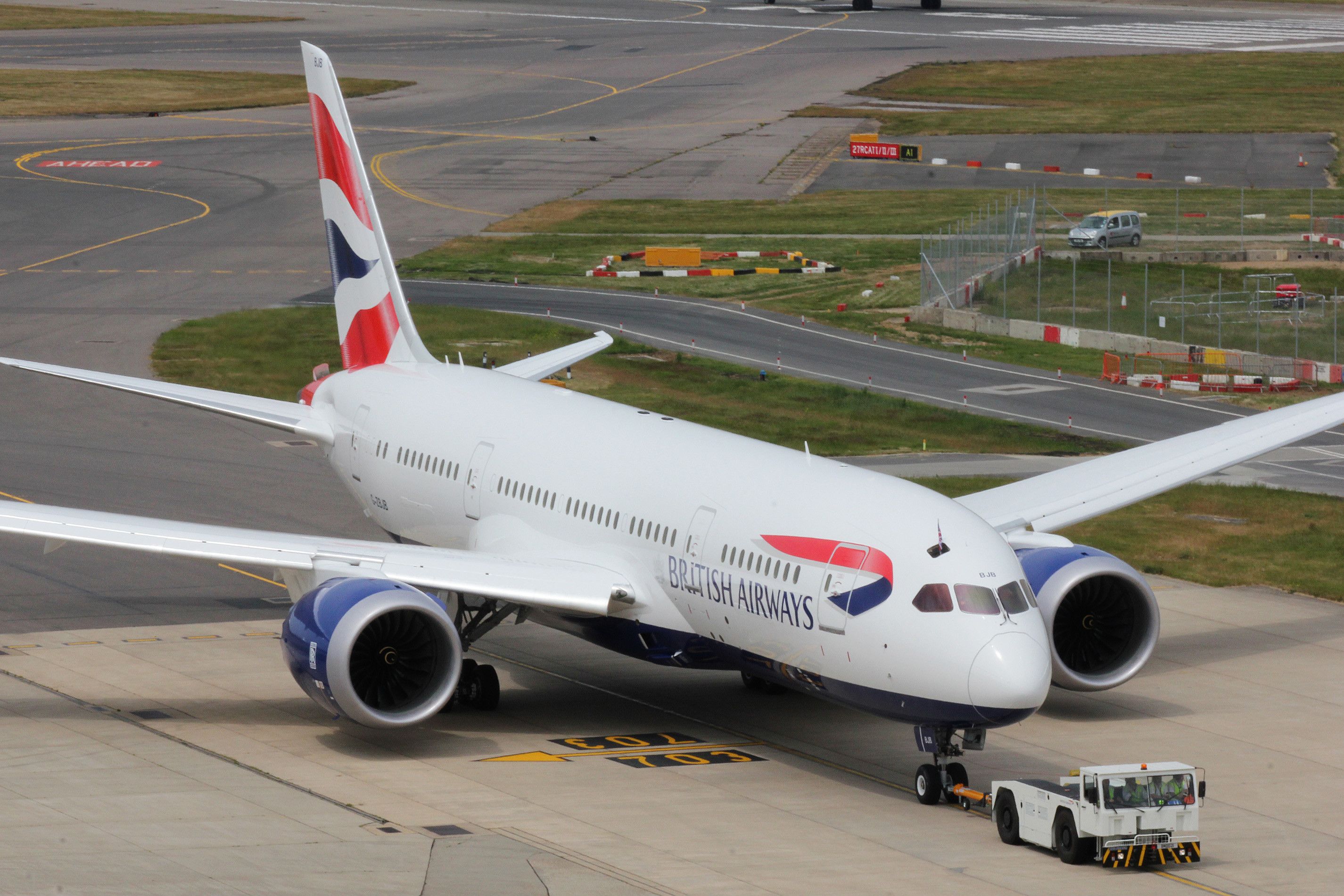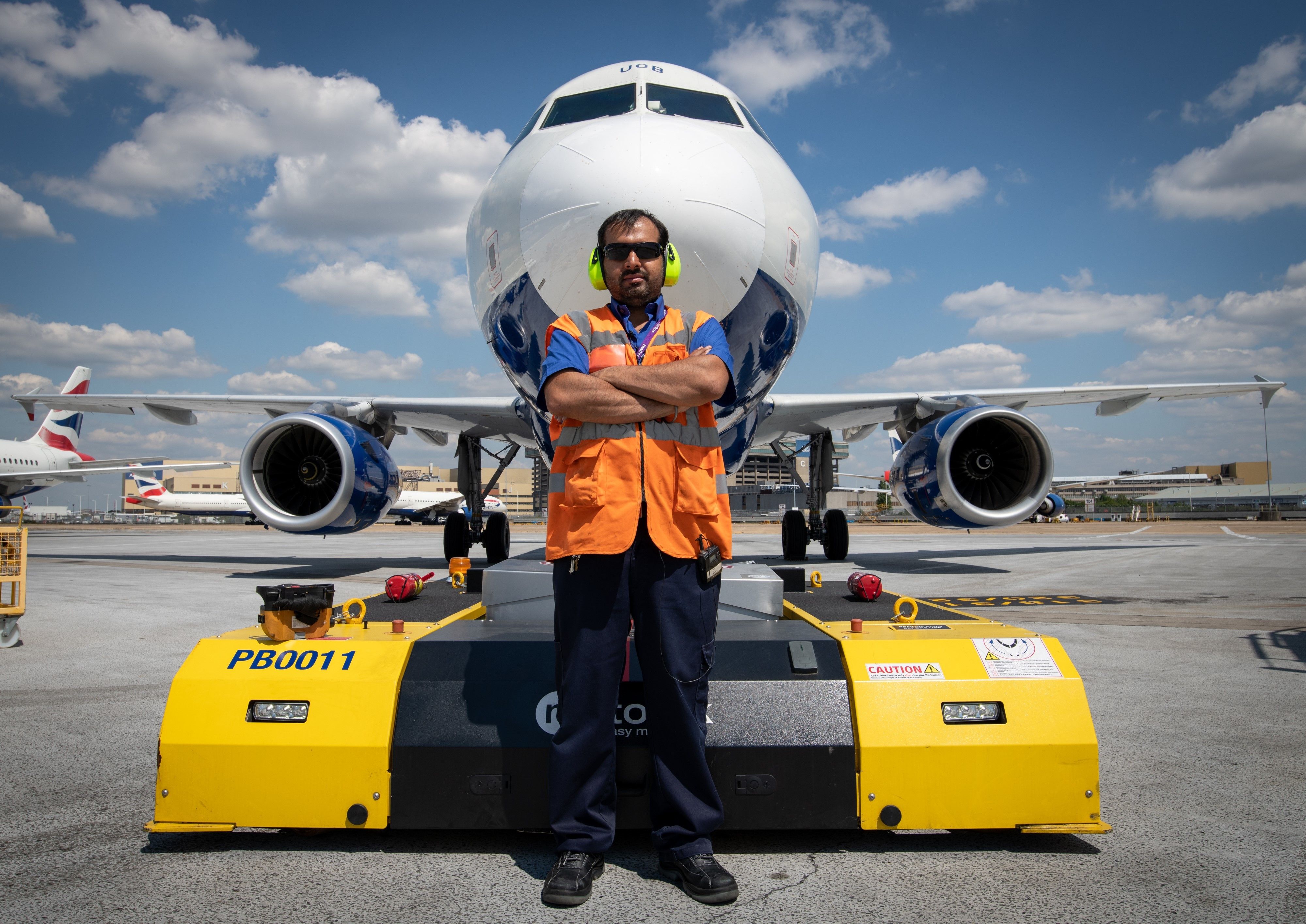Summary
- Starting use of tugs in the 1950s, primarily with agricultural tractors.
- TracMa and Eagle Tugs played a significant role in the development and innovation of aircraft tugs.
- Tugs are more efficient than using jet engines and are evolving towards driverless, electric options like WheelTug.
Tugs are used to push aircraft from the gate to the tarmac or onto the taxiway. Tugs may look small and low to the ground, but these are heavy pieces of equipment with power engines that can push aircraft weighing hundreds of thousands of pounds. While pushback tugs are a common sight at terminal gates, when did the use of tugs begin?
This article focuses on the history and evolution of pushback tugs, as highlighted by Eagle.
Starting use of tugs in the 1950s
It is hard to say exactly when aircraft started to use tugs for ground movement. The earliest aircraft, of course, could be pushed by hand (or several hands). This remained the case for some time with smaller aircraft. And with piston propeller engines, it was much simpler and less costly for aircraft to move under their power.
One of the first documented uses of a specific “tug” to move aircraft on the ground was in the early 1950s. By then, and certainly, during the Second World War, it had become common to use agricultural tractors to move aircraft. The French company, TracMa, built the first dedicated tugs for moving aircraft, and other ground equipment, in the early 1950s.
As the use of jet aircraft grew, TracMa became one of the best-known names in that market. It is still in operation today, having been acquired by aviation ground equipment manufacturer TLD. The US company Eagle Tugs developed the first bobtail cargo tractor in 1969. This was based on Ford technology and was first developed for United Airlines. Like TLD, it remains a leading manufacturer today.
Towing larger jet aircraft – developing an industry
Early tugs connected to aircraft using a towbar. The next innovative step was to create towbar-less tugs that could connect directly to the front tip of the aircraft. Again, TracMa was a leading innovator in this area. It developed the first towbar-less tractor with Air France in 1980.
The towbar-less tug brought several advantages. These were faster and safer to attach to aircraft – speeding aircraft movement became increasingly important as aviation expanded and airports became busier. They can also move at higher speeds without a tug bar, and the turning radius is decreased.
Why use a tug?
It is no surprise that tug use has expanded significantly with the development of jet aircraft. Obviously, they can – and do - move under their own power.
With jets, though, this is not the best idea. Firstly, jet engines are much less efficient at low speeds – their use causes wear to the engines and burns additional fuel. The use of the engines would also create additional noise, and could be a danger to ground crew and airport infrastructure.
Tugs of tomorrow
Tugs have continued to develop along with aircraft. They have become more powerful, faster and more efficient. The next big change has been to move to driverless tugs. These are even faster and more efficient to use. British Airways and Iberia have started using such tugs to push back A320 aircraft. These are rechargeable electric tugs.
WheelTug is another company working on innovative developments for towing and taxi. It has developed an in-wheel electrical product that allows aircraft to move short distances without the use of a tug, or main engine power. It currently has interest and backlog from several airlines for A320s and Boeing 737s – including IndiGo, KLM, Alitalia, and Ethiopian Airlines.
Would you like to discuss aircraft tugs, or other ground equipment further? Feel free to do so in the comments.

